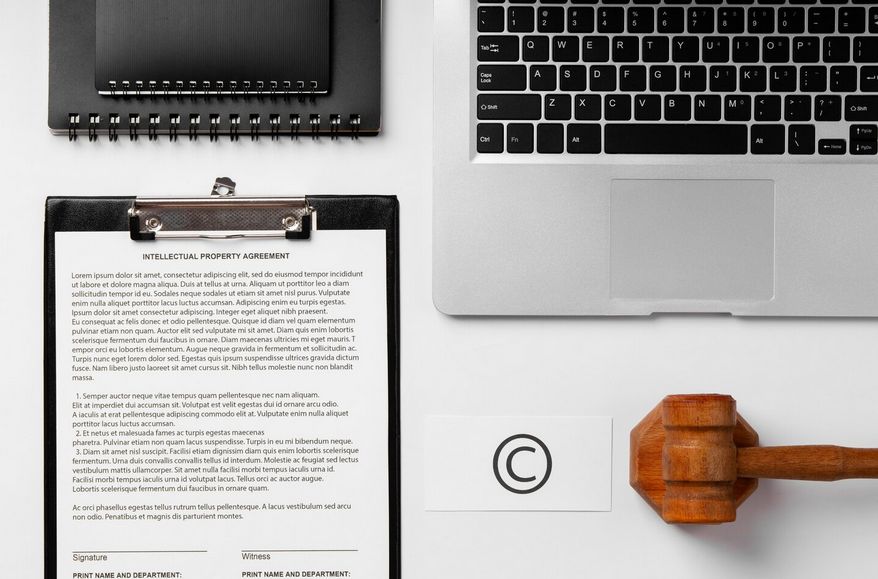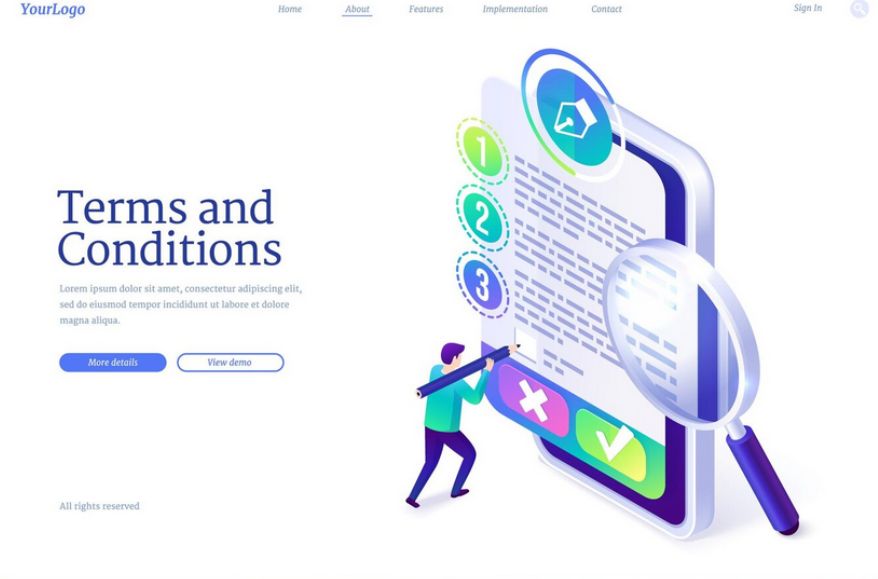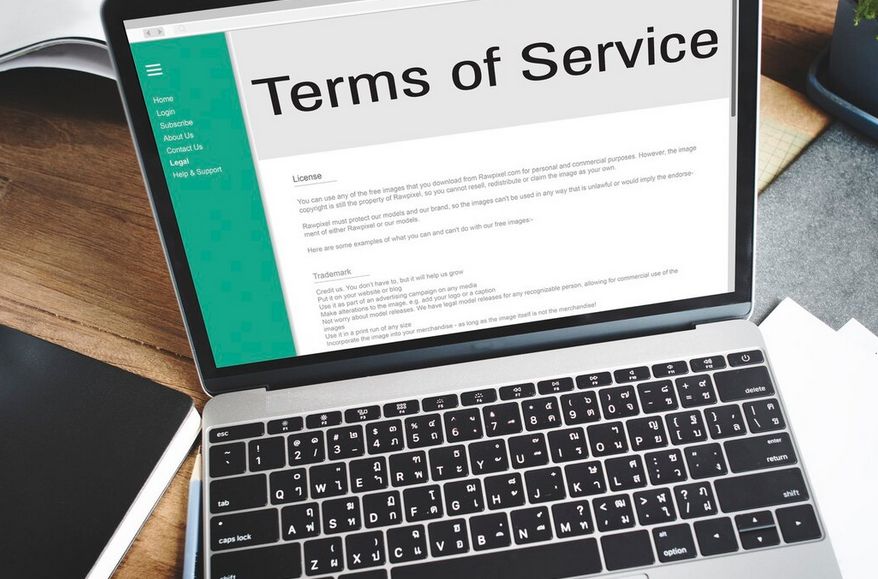When launching a business website, it can be tempting to focus all your energy on the design, branding, and user experience, treating terms and conditions like a boring chore you’d rather avoid. But those legal words at the bottom of your site carry weight far beyond their small font size. Clear website Terms and Conditions (T&C) aren’t only about protecting you from lawsuits—they’re an essential part of running a professional, trustworthy online presence that sets clear ground rules for your visitors. Ignoring them or copying a generic template can leave your business vulnerable to legal headaches that could easily be avoided.
This article explores why T&C are crucial for every business website, breaks down the key clauses you’ll encounter, and explains how a lawyer can help you shape these terms to protect your business in concrete ways. By the end, you’ll see that terms and conditions deserve more attention than many give them, saving you from costly surprises down the road.
Why Every Business Website Needs Terms and Conditions
Think of your website like a shop. When someone walks in, they expect certain rules to apply—things about returns, acceptable behavior, or responsibility for items damaged in the store. Terms and Conditions perform that role for online spaces, creating a legal framework to govern the relationship between you and your site visitors.
First, T&C act as a contract, spelling out what users agree to by visiting or using your site. Without this clarity, misunderstandings you’d never imagine can spiral into disputes. If someone tries to misuse your service or content, a website without clear rules is like a store with no security signs—no way to hold wrongdoers accountable.
They also protect your intellectual property. Your text, images, logos, code, and other creative assets are hard work and valuable. Explicitly stating your ownership rights in the T&C helps prevent unauthorized copying or misuse.

From a practical standpoint, having clear terms manages user behavior. If you want to prohibit spammy comments, fraudulent orders, or misuse of functionality, your terms make that clear upfront. They set expectations that help you maintain the quality and safety of your site’s environment.
Lastly, T&C can help minimize your risk exposure. By specifying limitations of liability and disclaimers, you shield your business from certain types of claims, like losses caused by errors on the site or reliance on information provided. The legal landscape is complex, and having clear terms can keep you on the right side of the law, especially with regulations that vary by country or industry.
Key Components of Website Terms and Conditions
While every business and website is unique, certain clauses are nearly always part of robust Terms and Conditions. Knowing what these are helps you understand the protections each part offers.
Introduction to Clauses
Terms usually begin by defining how users can interact with your website. This includes the scope of permitted use—what users can and cannot do, such as accessing services for personal use and not reverse-engineering your software. These user obligations and restrictions create a baseline for the relationship and help prevent abuse.
Intellectual property rights statements are a critical piece here, too. These paragraphs confirm that you, or your business, own or license the content and mark out expectations around use and reproduction.
Disclaimers
Disclaimers are straightforward but powerful. They note that while you strive for accuracy, your site’s information might not always be 100% up to date or error-free. This helps prevent legal claims stemming from misinformation.
Many sites include disclaimers about third-party links. Because you often don’t control outside content, informing users that you are not responsible for those helps reduce your liability.
Warranties often get disclaimed by saying that your website and services are provided “as is,” with no promises that everything will work perfectly or meet user expectations every time.
Limitation of Liability
This section puts practical boundaries on what kinds of damages you’re responsible for. It spells out that certain types of losses, especially indirect or consequential damage, aren’t covered by your business.
Limitation of liability keeps potential lawsuits from spiraling into catastrophic costs that could threaten your business’s survival. It’s about making sure risks don’t overshadow the core mission of your website or company.
Privacy and Data Protection References
Though it’s a separate document, your Privacy Policy closely relates to your Terms and Conditions. Your T&C will often include a clause pointing users to your Privacy Policy, explaining how their data is handled. This makes your legal framework more transparent and aligned with regulations like GDPR or CCPA.
Termination and Suspension of Accounts or Access
When users break your rules, you need a clear path to respond. This clause explains when you can suspend or terminate access to your website or services, protecting your business environment from abuse or harm.
Governing Law and Jurisdiction
Your Terms will also specify what country’s laws govern the agreement and which courts handle disputes. This clarity helps prevent confusion if legal challenges arise.
Modification of Terms Clause
Websites and businesses evolve, so it’s vital to include a statement reserving your right to update terms over time. This clause usually notes that continuing to use the site means accepting the updated terms.
Why Disclaimers and Limitations of Liability Matter
Without disclaimers and liability limitations, businesses open themselves up to unnecessary exposure. Disclaimers clarify that mistakes or omissions can happen, especially in fast-changing fields. That sets realistic user expectations about the information on your site and reduces the chances users will seek damages over perceived errors.
Limitations of liability directly protect your business by making sure that even if issues arise, your financial responsibility is capped. Without this protection, lawsuits sprung by disgruntled users could be devastating.
Together, these pieces make your website’s terms not about avoiding blame, but about being transparent regarding risks and boundaries. This transparency helps build trust with users. It sets a foundation that your site is professional and you are upfront about what’s in your control.

How a Lawyer Can Help Protect Your Business
Crafting strong, clear, and enforceable Terms and Conditions goes beyond simply copying boilerplate text. We’ve talked with the guys at Podmore Legal https://podmorelegal.com/, and they emphasize that a lawyer understands the particular risks your business faces and can tailor clauses to fit those needs.
For example, an e-commerce site will have different liability concerns than a blog or a software service. A lawyer can pinpoint which clauses to emphasize, which disclaimers are necessary, and the best way to phrase everything so it’s enforceable in your jurisdiction. A lawyer also ensures your documents comply with relevant regulations including consumer protection laws, data privacy legislation, and industry-specific rules.
This compliance not only helps avoid fines or legal trouble but also boosts your credibility. Besides drafting, legal experts advise on how to update terms when your business or laws change and how to get users’ consent in a way courts recognize. Finally, if disputes arise that require legal action, well-crafted Terms and Conditions drafted with legal guidance make your defense much stronger. It’s an upfront investment that could save you thousands or even tens of thousands in future costs.
Practical Tips for Business Owners
When it comes to your Terms and Conditions, relying on generic templates found online is a common pitfall. Those templates won’t cover your unique business needs and could leave gaps in your protection.
Putting terms in places where users can actually find and understand them matters too. Burying terms in tiny footers or wrapping them in legalese no one reads won’t help. It’s worth making your Terms accessible and straightforward without losing their legal precision.
Remember that both your business and the legal landscape will evolve. Regularly revisiting your Terms and Conditions is a smart habit to keep your protections relevant.
Also, consider linking your Terms closely with related policies, like your Privacy Policy or Refund Policy, so users get the full picture of your rules and commitments.
Wrapping It Up
Strong website Terms and Conditions mean a website that isn’t vulnerable to unnecessary legal trouble. They shape clear expectations for your visitors while actively protecting your business interests. Instead of sweeping these crucial details under the rug, giving them real attention will save headaches and money later.
Investing time and, ideally, expert legal advice in drafting and maintaining these terms might feel tedious, but the peace of mind it brings makes a huge difference. Clear, well-organized terms back up what your business values, how it operates, and how it treats its users. When you treat your Terms and Conditions with respect, you’re not only covering yourself legally but also showing professionalism that users appreciate.
In the fast-moving digital world, a website with clear rules is a website that stands strong. Don’t overlook your Terms and Conditions—they’re a backbone that supports your entire online business.

